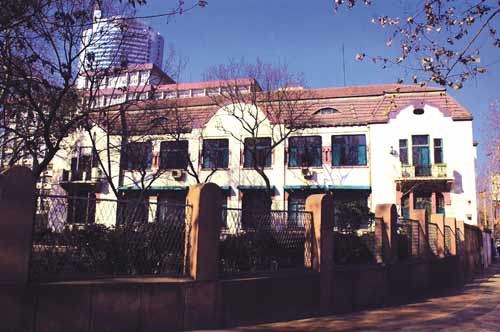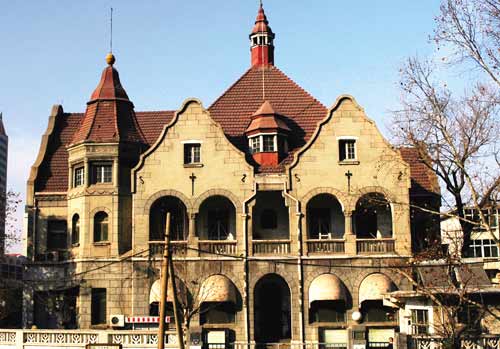
original German Consulate

the Shandong Post Building

the old construction of the old
[b] of the original bank of communications / > the flourishing of the banking industry has also led to the rapid development of the banking industry, which is regarded as the symbol of the economic prosperity of the old commercial port. The bank building is still standing on the two road 148. It has stood there for nearly a hundred years, watching the passage of time and the changes of the times.
from the eastward journey of the municipal government to the weft two road by car, you will see the original traffic bank building, which is now used by the Shandong branch of the people's Bank of China. This European style architecture has four floors, three floors on the ground and a basement floor. It was built in 1926 and was designed by Zhuang Jun, the famous architect of China. During the period of Japanese puppet regime, the bank changed to the joint preparation Bank of China. After the victory of the war of resistance against Japan, it changed to Bank of communications, central bank and Bank of Beihai.
it is Bank of Edward, and this Baroque architecture is now the office building of the people's Bank of Ji'nan. This is the early German building in Ji'nan. It was built in 1901. It was originally the residence of the German engineer of the Ji'nan the Yellow River railway bridge. In 1906, it was changed to Edward bank. It is the first foreign bank in Ji'nan. After that, Japan's DPRK bank, Yokohama's Bank of gold, France's and Belgium's equity lending banks landed in Ji'nan. Their appearance made Ji'nan's ancient inland city feel the pulse of the world economy for the first time.
remove the banking industry. In the past, the two route was also the postal center of Ji'nan. The former site of Shandong post office was located at No. 158, No. two road. This style of westernized architecture was once the tallest building in Ji'nan. In 1919, it was designed by Charlie, a foreign architectural firm in Tianjin and Kang Wen Sai. During the war of resistance against Japan and the liberation war, it was occupied by the Japanese army organs stationed in Lu and Kuomintang second appeasement command areas, and once became the official residence of Wang Yaowu. After liberation, it is the office building of Shandong Federation of trade unions and the office and business building of Ji'nan post office. The floor of the building is basically "concave", and the northern facade along the street is slightly convex and concave, and is divided into five sections, showing a "mountain" shape. The western side has a tall watchtower with a height of up to 30 meters, and the red tile helmet has a distinct German architectural style.
Economic and cultural development has also promoted Ji'nan's business dealings with other countries. As early as the late nineteenth Century, Ji'nan had carried out a wide range of trade and trade activities with Germany, Britain and the United States. The nationals of these countries came to Ji'nan to live, and the consulates of all countries followed. In those days, Germany, Britain and the United States opened consulates in Ji'nan, of which the German Consulate was located at the northwest corner of the two latitude two intersection. The building is also a typical German style. It consists of two East and West buildings. The East building is an office building and a dormitory, the West building is the consulate office and the residence, the two floor is connected with the garden, and the building is solemn and simple. Its completion marks the beginning of the radiation and development of German architecture from the coastal cities of Shandong to the mainland.
wandering along the two road, you often find the other side of old Ji'nan. These ancient buildings and ordinary lanes are like the rings of history. They record the plain and simple life and show colorful colors. History is like a river, which takes away the years and the new memory. Although the ancient two roads are cramped, crowded and decayed, if we dust the dust, will the history be so vivid?